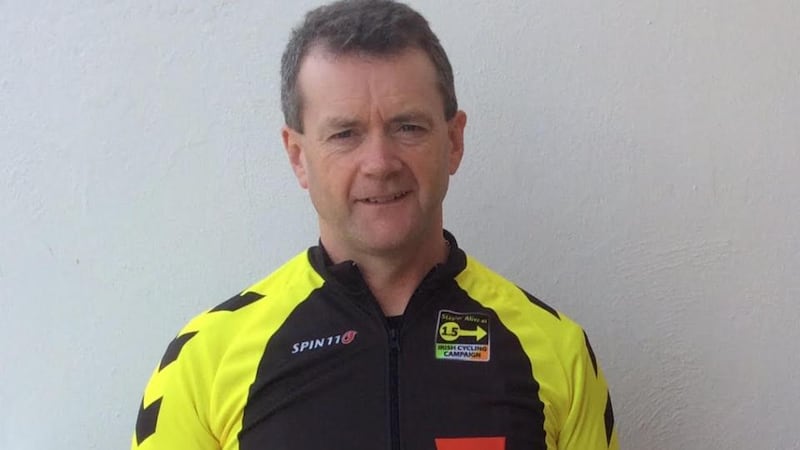What’s in a word? It might save a life, according to one cycling campaigner who is advocating for a set minimum overtaking distance between drivers and cyclists.
Page 43 of the Rules of the Road states that a motorist "should give extra space when overtaking a cyclist".
Wexford-based cyclist Philip Skelton has been campaigning for years to have the word "should" changed to "must" and the vague expression "extra space" amended to the specific 1.5 metres which is an international standard for overtaking distances.

Three years ago, Skelton set up his “Stayin’ Alive at 1.5” campaign to seek a change in the law which would make it safer for cyclists.
He did so in response to the deaths of two cyclists in quick succession on Wexford roads.
“I decided to have a look around and see what other jurisdictions had done about this particular problem,” he says.
"I discovered that other places had put an actual measurement in place for overtaking laws, which we don't have in Ireland. Wisconsin passed minimum distance laws in 1973. It is something we need to catch up with here."
Countries that have introduced the 1.5-metre law include France, Belgium, Portugal and Australia, 26 US states and several provinces in Canada. Research by the American League of Cyclists in 2014 found up to 40 per cent of cyclist fatalities are caused by cyclists being hit from behind by a motor vehicle travelling in the same direction.
These actions invariably happen when a motorists does not give a cyclist sufficient distance when overtaking.
Some 5,000 cyclists in Ireland have signed Skelton’s petition. Stayin Alive carried out its own survey last year and found that 97.1 per cent of bicycle riders said they had been scared by an overtaking manoeuvre and 81.8 per cent believed a minimum passing distance would help solve the anomaly.
However, his campaign raises many questions. How would a motorist know what 1.5 metres was and how would the legislation be enforced?
"Last April, I had a meeting with the Minister for Transport Paschal Donohoe and those questions were foremost in his mind," Skelton says.
He says the principal purpose of any legislation would be awareness rather than enforcement.
“It’s not about gardaí going around with a measuring tape, it’s to create awareness. That awareness is crystallised and underscored by law.”
However, he points out it is possible to enforce the 1.5 metre legislation using modern technology. In the United States, an ultrasonic device called a Bsmart operates like a speed gun and can measure passing distances between cars and bicycles. Cyclists also frequently have cameras on their bicycles which can record footage that can be used as evidence in court.
Skelton lived in Australia for 10 years. Queensland offered a trial of minimum passing distance law in April 2014 because of 13 cyclist deaths on roads in the state. The trial includes signs making motorists aware of the need to maintain a safe distance with cyclists. So far it has helped cut death rates among cyclists.
“This is not about issuing citations. Education is a big part of this. A lot of people who don’t cycle don’t know how scary it is,” Skelton says.









